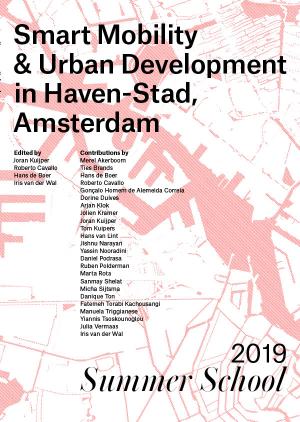Hosted by
Smart Mobility & Urban Development in Haven-Stad, Amsterdam: 2019 Summer School
Synopsis
Cities are in transition. Most cities, like Amsterdam, are growing in terms of inhabitants, visitors, and jobs, which cause an increase in the movement of people and goods to, from, and around the city. Next to that, socio-economical factors, new insights, policies, and technology innovations change how we live and work in our cities. Mobility operates as the intersection between the city’s infrastructure and its inhabitants; it is the central link in the well-functioning of a city and a key element in the organization of multi-modal transport. We have seen a rise of, among others, Mobility as a Service (MaaS), ride-sharing, and micro-mobility, and even though not implemented yet, autonomous vehicles are one of the relevant technologies to consider when looking at our future cities. How does mobility in the future impact the way our cities are being developed?
Just like cities in general, the area of Haven-Stad is in transition as well. From being a harbor area at the edge of the city center, it will be developed into a mixed-use neighborhood and will be the biggest urban generator for future developments in Amsterdam. To gain insight and to better understand the interrelationships between urban development and urban mobility and to show perspectives on integration of future mobility scenarios in an actual urban environment, we asked each of the three groups to elaborate on a specific part of Haven-Stad. Each group came up with a perspective for their area, while looking at a wide variety of aspects: the role and function of smart urban mobility, including Mobility as a Service (MaaS) and emerging mobility options; the travel behavior of a growing number of users; the sustainability challenges and fairness in transport planning; the public and semipublic spaces (and social dynamics therein); the exploration of alternative, marginal and emerging social uses of urban developments as meeting places and culture; the urban integration in the overall mobility system; the interface between architecture and infrastructure within the urban fabric; the programming of future transport nodes and the access and egress to and from such transport hubs of all types of smart mobilities (e.g. conventional public transport, shared mobility, autonomous taxis, et cetera). As the development of Haven-Stad will take over 30 years, the factor time and phasing in the approaches and scenarios is key in each of the three proposals.
The eight-day program covered different didactical components. Firstly, participants were introduced to Amsterdam, the current status of the Haven-Stad project, mobility, and future developments. Through various presentations by city representatives, participants were informed on the history, general information and mobility policies on Amsterdam and Haven-Stad. Next to that, experts from TU Delft gave presentations on smart mobility, different modes of mobility, behavioral aspects, and the state of the art of mobility-related research. During an afternoon bike tour, participants had the chance to explore the area and get a better feeling for its size and current atmosphere of the project location. During intensive and interactive work sessions with the seven tutors, analyses were made and the perspectives, approaches, and scenarios were refined. The three groups presented the final results for a group of visiting critics.
With this publication, we want to show the richness of perspectives and insights on Haven-Stad, that were developed during this short but very intensive Summer School. We are proud to present the three different projects, each with their own focus. The invited experts provided the participants with background knowledge lectures and a workshop. Excerpts of these sessions are included in this publication. We thank all participants, tutors and involved stakeholders for their efforts that have made this Summer School a success!

